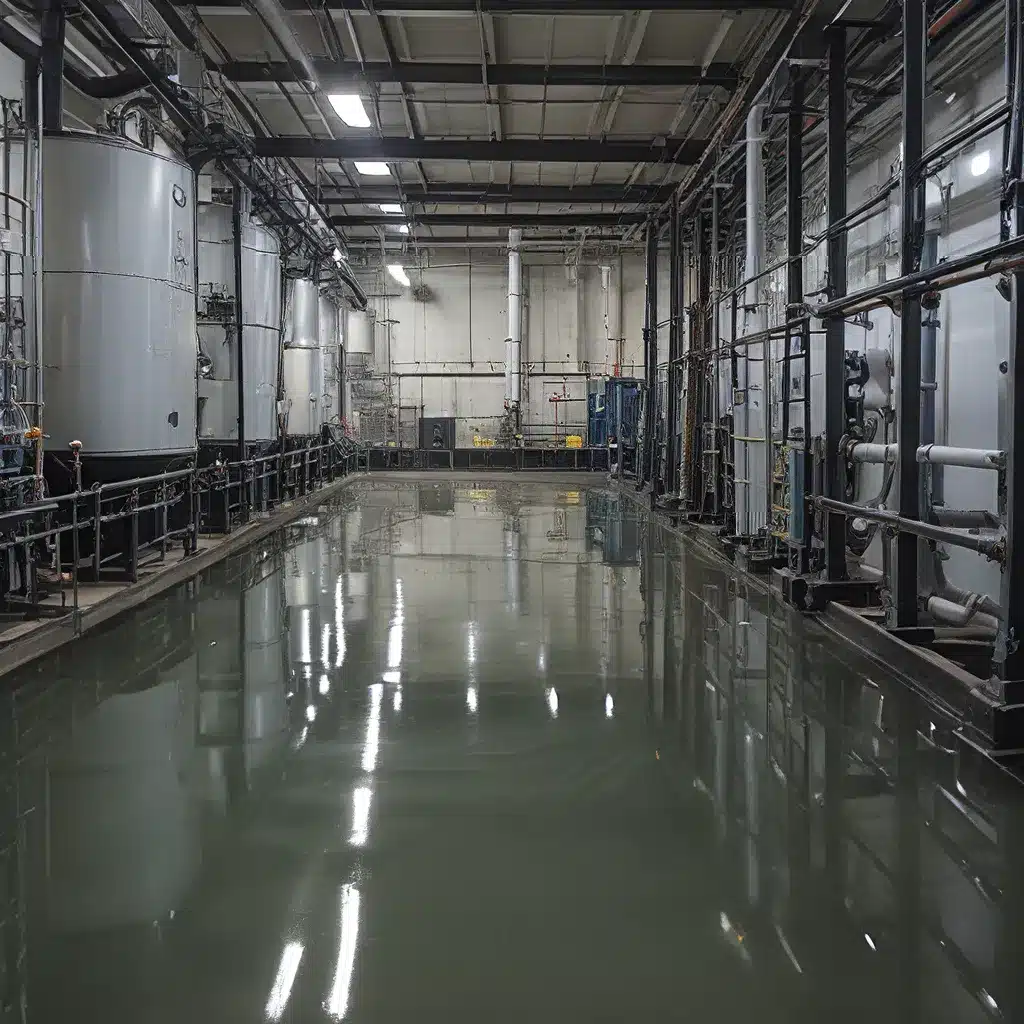
Unraveling the Mysteries of Industrial Water Treatment
Picture this: you’re standing in a bustling industrial facility, surrounded by the hum of machinery and the rhythmic pulse of production. Amidst the chaos, there’s a critical, yet often overlooked, piece of the puzzle – the water treatment system. This unsung hero, responsible for keeping the gears turning and the processes running smoothly, is the focus of our exploration today.
As an environmental enthusiast, I’ve always been fascinated by the transformative power of water treatment. It’s a realm where science and innovation collide, unlocking new possibilities for industrial operations and environmental sustainability. And let me tell you, the advancements in this field are nothing short of jaw-dropping.
Recent research has shed light on groundbreaking techniques that are revolutionizing the way industries approach water treatment. From novel membrane technologies to advanced oxidation processes, the solutions on the horizon are poised to redefine the very concept of industrial cleanliness.
So, buckle up as we dive into the depths of this captivating world, where the potential of water treatment is being unleashed in ways you never thought possible.
Membrane Marvels: Transforming Industrial Wastewater
One of the most exciting frontiers in industrial water treatment is the realm of membrane technologies. These semi-permeable barriers, often made of cutting-edge materials, have the remarkable ability to selectively filter out unwanted substances, leaving behind pristine water.
Imagine a scenario where a manufacturing facility is grappling with a persistent problem – stubborn contaminants that just won’t seem to budge, no matter how many traditional techniques they try. Enter the membrane solution, a game-changer that can surgically extract these pesky impurities, leaving behind crystal-clear water that’s ready to be reused or safely discharged.
Cutting-edge research in this field has yielded mind-bending advancements, such as membranes capable of removing even the tiniest of microplastics or heavy metals from industrial wastewater. And the best part? These membranes can do it all while consuming a fraction of the energy required by conventional treatment methods.
But the real magic happens when you combine these membrane marvels with other innovative technologies, like advanced oxidation processes. By integrating these complementary approaches, industries can unlock an entirely new level of water treatment efficiency, leaving no trace of contaminants behind.
Oxidation Oasis: Harnessing the Power of Chemical Reactions
While membranes are revolutionizing the physical separation of impurities, there’s another powerful tool in the industrial water treatment arsenal – advanced oxidation processes. These chemical-based solutions leverage the power of highly reactive species, such as hydroxyl radicals, to break down even the most stubborn organic compounds.
Imagine a scenario where a chemical plant is grappling with a particularly challenging waste stream, one that defies traditional treatment methods. Enter the oxidation oasis – a system that can transform these recalcitrant molecules into harmless byproducts, effectively cleansing the water and paving the way for safe discharge or reuse.
Emerging trends in this field suggest that the combination of membrane filtration and advanced oxidation is poised to become the holy grail of industrial water treatment. By leveraging the strengths of both technologies, industries can achieve unprecedented levels of contaminant removal, while also reducing their environmental footprint and operating costs.
But the true power of these oxidation-based solutions lies in their adaptability. Whether it’s tackling stubborn dyes, neutralizing persistent pharmaceuticals, or breaking down complex industrial solvents, these chemical workhorses can be tailored to address a wide range of water treatment challenges.
Unleashing the Potential: Integrated Approaches and Future Horizons
As we’ve explored the remarkable advancements in membrane technologies and advanced oxidation processes, it’s clear that the future of industrial water treatment is brimming with excitement and possibilities. But the true magic happens when these innovative solutions are combined in a seamless, integrated approach.
Imagine a scenario where a beverage manufacturer is struggling to keep up with increasingly stringent environmental regulations. By integrating membrane filtration and advanced oxidation, they can create a water treatment system that not only removes contaminants with unparalleled efficiency but also reduces their overall water consumption and energy usage.
This holistic approach, where multiple technologies work in harmony, is the key to unlocking the full potential of industrial water treatment. And the best part? It’s not just a hypothetical scenario – real-world companies are already embracing these integrated solutions, reaping the benefits of improved environmental performance, cost savings, and operational resilience.
But the journey doesn’t end there. As we peer into the crystal ball of the future, we can see even more groundbreaking advancements on the horizon. From the integration of artificial intelligence and machine learning to enhance process optimization, to the development of novel membrane materials and oxidation catalysts, the possibilities are truly limitless.
So, as we bid farewell to the traditional, inefficient water treatment methods of the past, let’s raise a glass (of freshly purified water, of course) to the dawn of a new era – one where the potential of industrial water treatment is unleashed, paving the way for a more sustainable and prosperous future.


